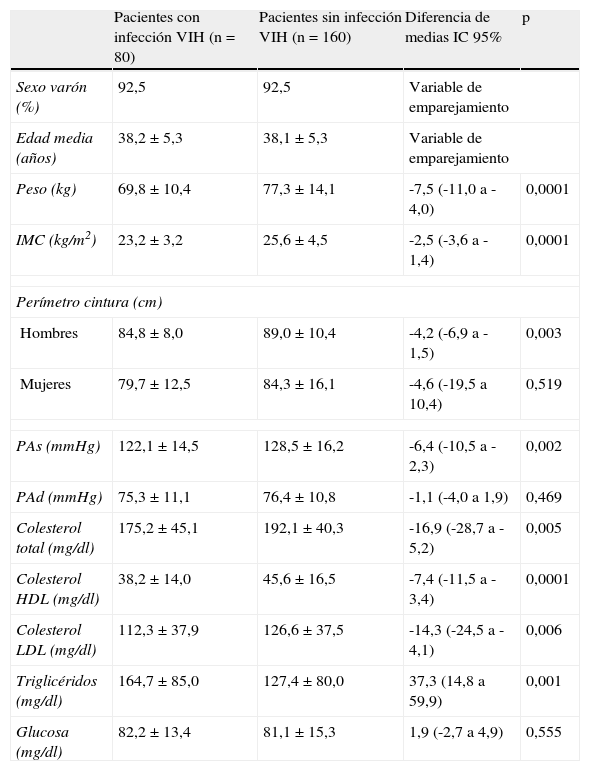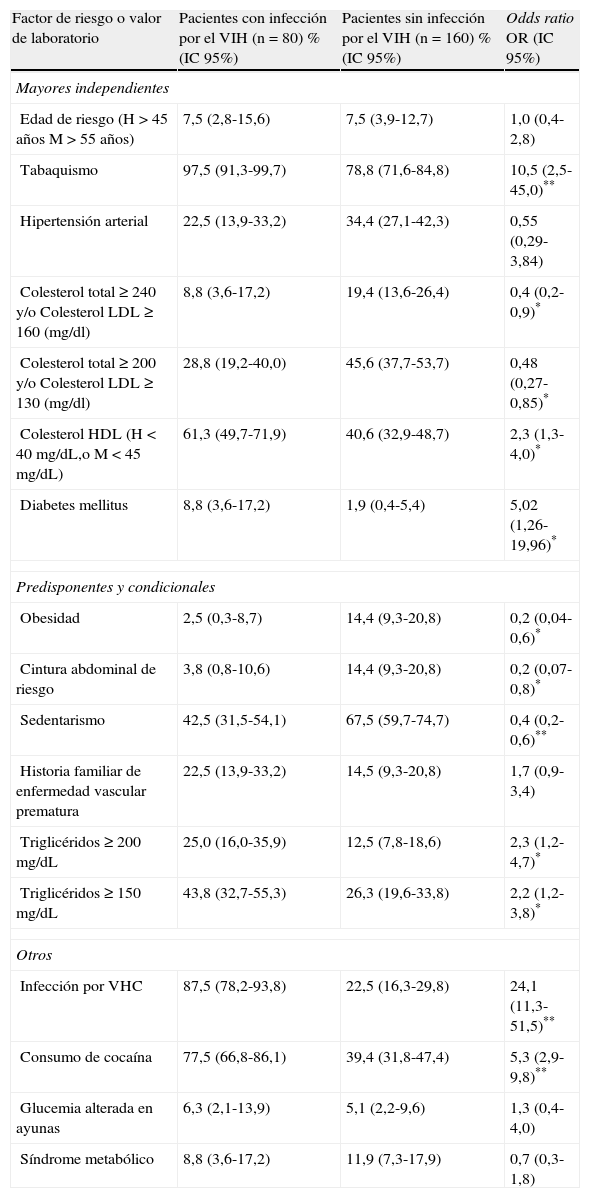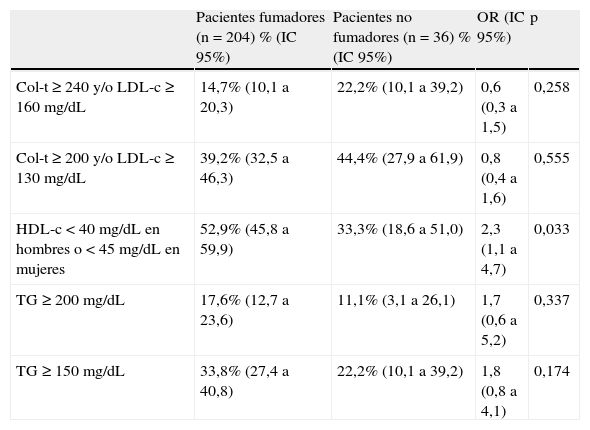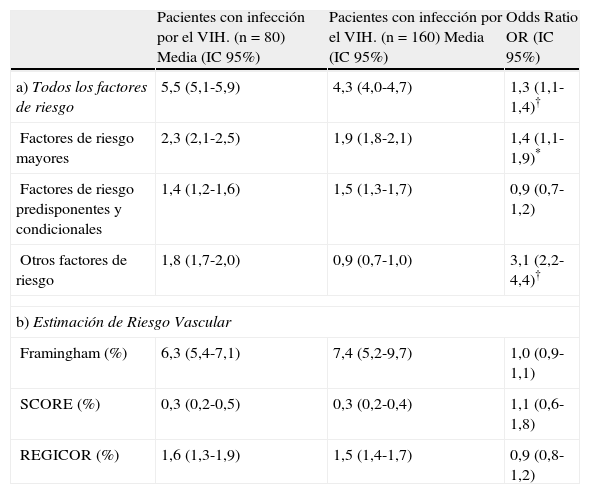Los factores de riesgo vascular (FRV) en pacientes penitenciarios infectados por el VIH (VIH+) no se conocen en toda su extensión. Hemos estudiado la prevalencia de estos factores en pacientes VIH+, en comparación con una población no infectada (VIH–).
Pacientes y métodoEstudio descriptivo transversal en el que se incluyeron pacientes VIH+ (n=80) de un centro penitenciario. Por cada paciente se analizaron dos internos VIH−, emparejados por edad y sexo (n=160). Se analizaron los FRV, y se estimó el riesgo vascular según las funciones de SCORE, Framingham y REGICOR.
ResultadosLos 80 pacientes seleccionados (92,5% varones) tenían una edad media de 38,1 años. Los enfermos VIH+ presentaron una prevalencia significativamente mayor de tabaquismo (97,5 frente al 78,8%), infección por el VHC (87,5 frente al 22,5%), consumo de cocaína (77,5 frente al 39,4%), niveles bajos de colesterol-HDL (61,3 frente al 40,6%), triglicéridos elevados (43,8 frente al 26,3%), y diabetes mellitus (8,8 frente al 1,3%) que los internos VIH−. Entre los VIH− hubo significativamente más pacientes con niveles de colesterol total >200 mg/dl y/o colesterol-LDL >130 mg/dl (45,6 vs. 28,8%), con obesidad (14,4 vs. 2,5%), sedentarismo (67,5 vs. 42,5%) y con un perímetro abdominal de riesgo (14,4 vs. 3,8%). Todos los internos tuvieron una estimación de riesgo bajo según las ecuaciones SCORE y REGICOR, tan solo un 1,3%, según la ecuación de Framingham, mostraron un riesgo elevado.
ConclusionesLa prevalencia de los FRV en los pacientes VIH+ del centro penitenciario estudiado fue muy superior a la de los sujetos VIH−. Sin embargo, la estimación del riesgo vascular fue reducida.
There is little data regarding vascular risk factors (VRF) in HIV-infected inmates. In this study, we have studied the prevalence of VRF in HIV-infected patients, analyzing the differences with a non-infected population.
Patients and methodHIV-infected inmates (n=80) and two non-HIV controls selected for each patient and matched for age and sex (n=160) were included in a descriptive cross-sectional study. We analyzed the VRF, and risk was assessed according to the SCORE, Framingham and REGICOR functions.
ResultsIn the studied population (mean age: 38.1 years; 92.5% men), HIV-infected patients had a significantly higher prevalence of cigarette smoking (97.5 vs 78.8%), diabetes (8.8 vs 1.3%), serum triglycerides>150mg/dl (43.8 vs 26.3%), low HDL-cholesterol levels (61.3 vs 40.6%), HCV infection (87.5 vs 22.5%), and cocaine consumption (77.5 vs 39.4%). The non-infected group had significantly higher prevalence of total cholesterol>200mg/dl and/or LDL-cholesterol >130mg/dl (45.6 vs 28.8%), obesity (14.4 vs 2.5%), sedentary lifestyle (67.5 vs 42.5%) and increased waist circumference (14.4 vs 3.8%). All the evaluated inmates were considered to be at a low risk by SCORE and REGICOR, and 1.3% to be at a high risk by Framingham in both groups.
ConclusionThe prevalence of VRF in HIV-infected patients of the studied prison was much higher to that of the HIV-negative subjects. However, the estimation of the cardiovascular risk was low.
Artículo
Diríjase desde aquí a la web de la >>>FESEMI<<< e inicie sesión mediante el formulario que se encuentra en la barra superior, pulsando sobre el candado.

Una vez autentificado, en la misma web de FESEMI, en el menú superior, elija la opción deseada.

>>>FESEMI<<<










